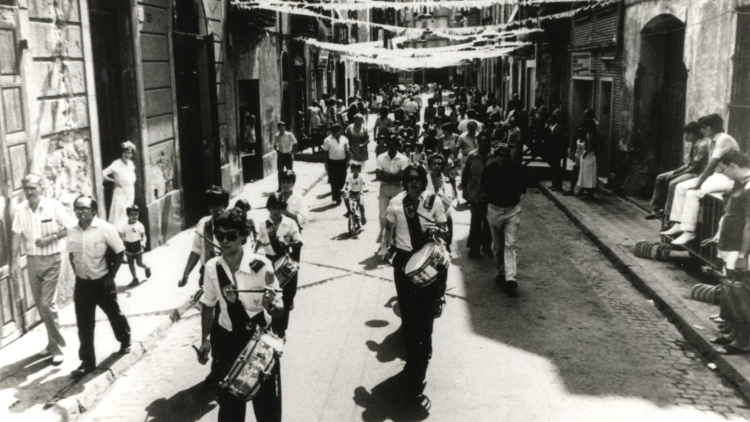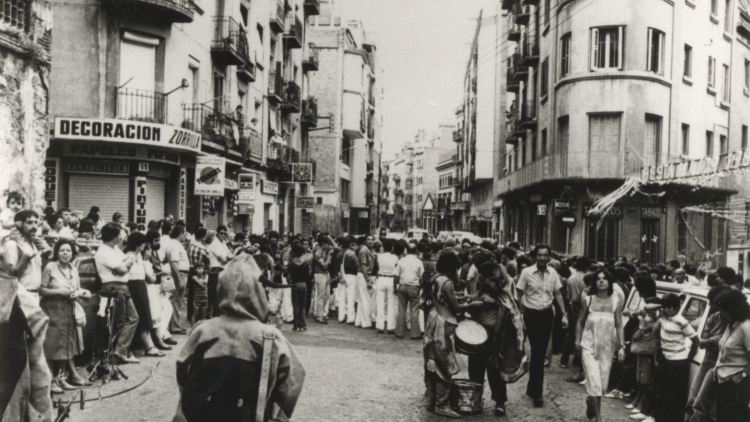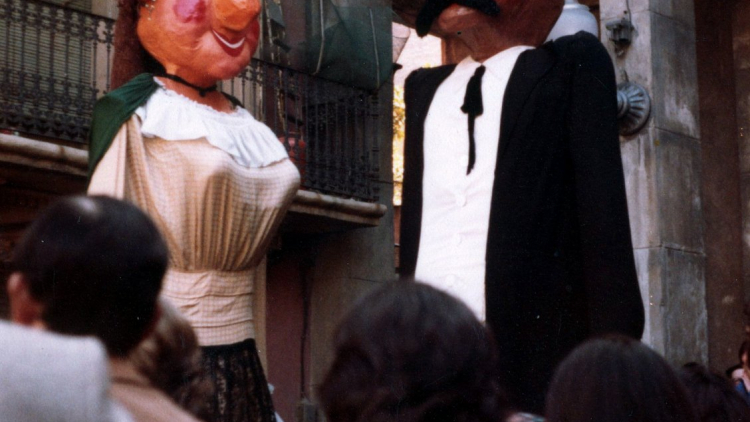Street culture: neighbourhood festivals
The start of a new democratic era led to the people’s reappropriation of the streets. Leaving behind the years when the Franco regime monopolised exclusive use of the streets. Reclaiming public spaces felt like a liberation and numerous initiatives capturing the spirit of the new times flourished.
In the streets, the new democratic culture found its vital element. Making culture in public spaces meant making the city a more democratic environment.
The Sants Festival (Festa Major) had been losing its central role, which the District Council proposed to get back.
Social movements had helped to reclaim the streets and squares, which were now available to be used as festival sites. In a context of economic suffocation and enormous urban planning shortcomings on a city scale, public expenditure on popular culture was modest but not insignificant. The City Council limited itself to coordinating and subsidising some modest events during the first term of office, while the organisation of festivals fell to residents themselves. Culture was on the streets. Even the St Medir festival took on a new meaning.

In those early years of democratic recovery, the streets of Sants began to be decorated again. At the 1981 Festa Major, the sardana dance bands reappeared in public on Carrer Alcolea (Author: Pere Monés, AMDS)




